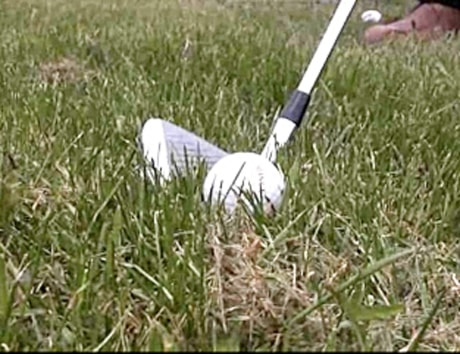For the first time this year it feels like summer!
This past week we have seen seasonal warm weather and it appears, according to the weather man, that we shall continue to experience the true heat of summer. Great golfing weather has finally arrived and hopefully is here to stay.
Practice makes perfect, as a wise man once told me. Golfers spend countless hours hitting balls on the driving range so that when they go out on the golf course, their shots are hit straight down the middle of the fairway. Their next shot lands on the green, then after one or two putts, they move on to the next hole to do it again.
At the end of the round we have just posted a great score, which of course brings us back the next day. Each and every one of us has expectations of that perfect round every time we step onto the golf course. This is, of course, what makes golf a unique game. We all have the ability to improve from the game before.
Reality is that we do not hit every shot perfect. Preparation is the key to lowering your scores and understanding how to get out of trouble when you mishit a shot, and is key to lowering your score. Golf is not a game of perfection and we must be prepared to get ourselves out of trouble.
You will notice that the grass at most golf courses is lush and thick, especially when you venture out of the fairways. The further away from the fairways you get, the deeper and thicker the grass seems to be. Hitting out of the deep grass can be extremely challenging and can cause grief to all golfers.
Understanding a few key points about deep grass will assist you in not only getting the ball out and to your target, but also in making the correct club choice that will assist in advancing the ball back into play. A few of these include: speed, tight grip pressure, finish position and club choice.
Long grass, for many, can be very troublesome. The most common complaint that I receive when players hit from long grass is that the ball does not go anywhere. Players quite often have to play two or three shots before their ball makes it way back to the fairway or the green. Understanding what is happening will assist you in making better choices and getting the ball out of the rough on the first shot.
The reason why this shot is difficult by nature is that the long grass gets caught between your club head and the ball at impact. This slows down the club drastically as you are making contact and in most cases, causes a poor result.
The first step is to ensure that you are swinging through the grass with as much speed as possible. The faster you swing the club, the easier it will cut through the long grass. Last week’s article was on creating more speed and if you apply those principles, hitting out of the rough will become easier.
The next step is to grip the club tighter. Gripping the club tighter as you swing will help keep the club square through impact. When swinging through deep grass, the club head tends to twist as you enter the grass. This will create poor direction if you get the ball out.
There is a fine line to gripping the club too tight, however. Be sure to grip the club tight enough to stop the twisting of the club head as it enters the long grass, but relaxed enough to ensure you still allow for the release to happen.
Club selection is an important in hitting the ball out of the long grass. I see too many players using a long club (4 or 5 iron) to get the ball up and out of the long grass. This is the most logical choice as most of us choose the club that will advance the ball the distance we intend to go.
Consider using a more lofted club when hitting from deep rough. A club with more loft will swing through the long grass easier as less grass gets caught on the face of the club.
Depending on the lie you are faced with, getting the ball back in play will assist in lowering your score at the end of the day.
Finally, it is always important to swing through to a full finish position. Doing so will assist in ensuring that the club creates maximum speed through the long grass and will not slow down as easily. More times than not, the end result will be as you envisioned it.
Understanding what is happening and why the club slows down in the deep rough is key to executing properly. Choose the proper club for the depth of grass, grip tighter, swing fast and through to a full finish position, and you will most certainly get the ball out and back into play in less shots.
Scott Bergdahl is the head professional at Lakewood Golf Resort near Sylvan Lake.
